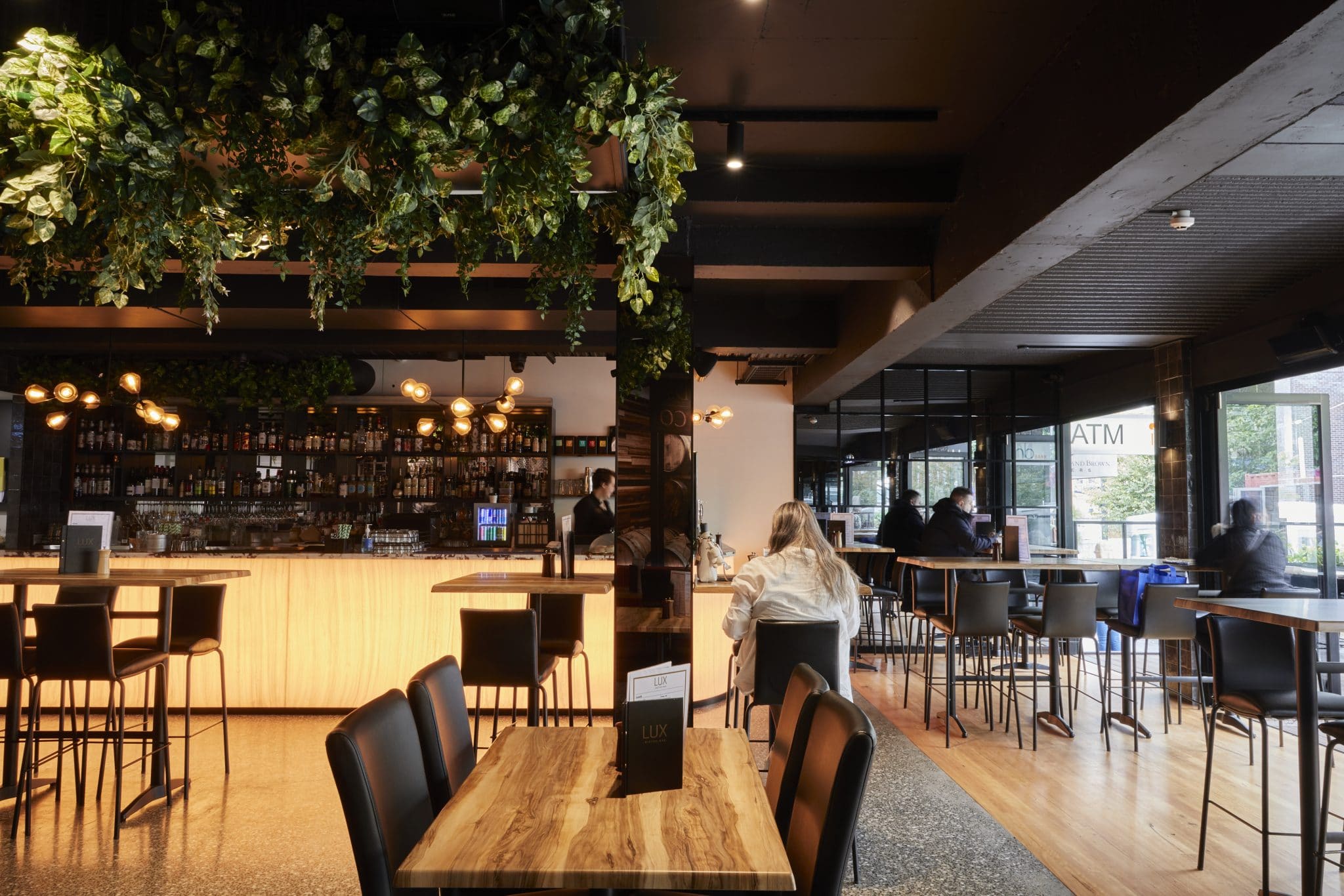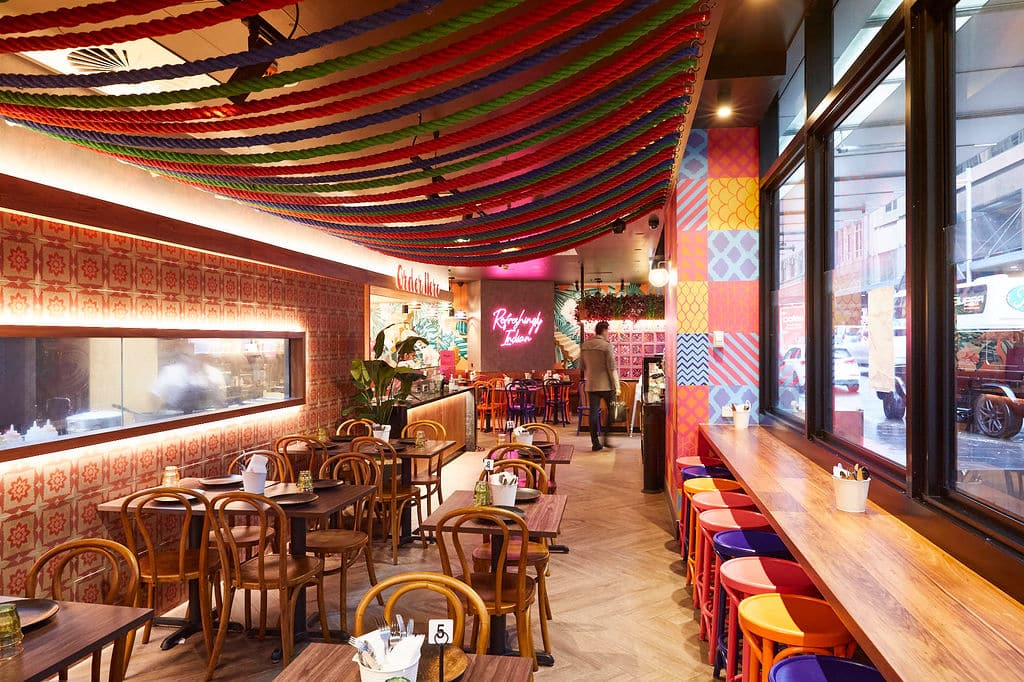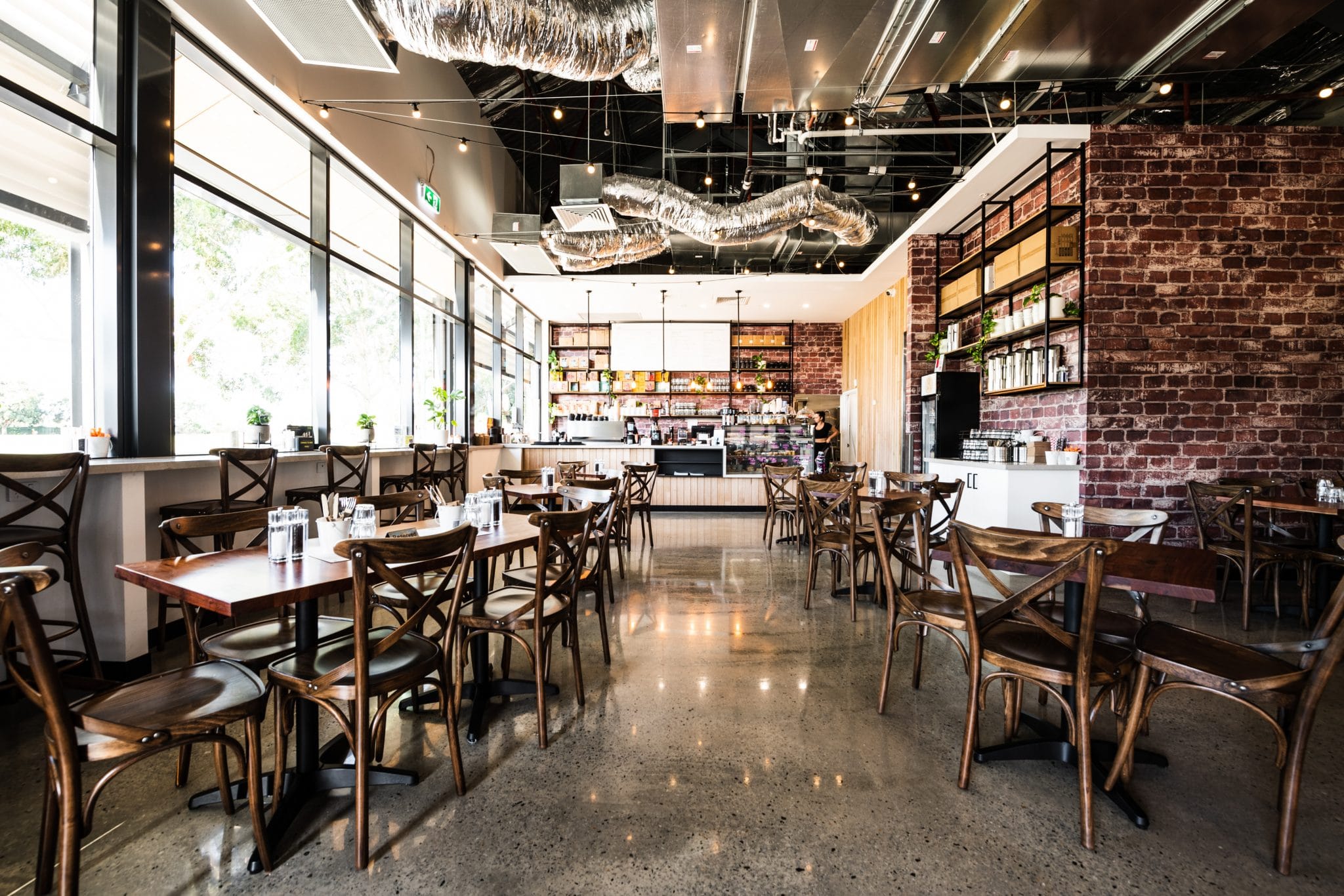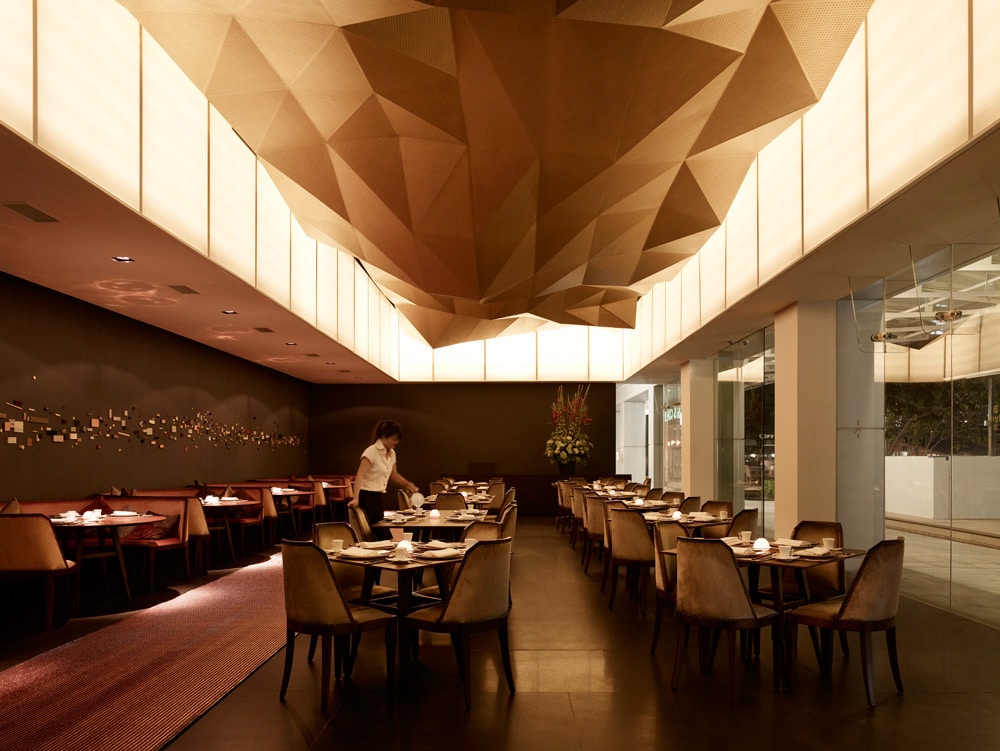Among the clinking of glasses, and the lively hum of happy conversations sits a silent but very important part of what makes your venue so special – The furniture!
While your guests may not notice it as they enjoy their meal, or drinks; anyone who has worked in hospitality will know of the amount of thought, effort, and industry-specific considerations that went into making sure every meal had a place to be eaten and every person a place to sit.
Given the importance of hospitality furniture to every venue’s success, we thought we would put together a little guide for our fellow hospitality superstars to ensure your furniture performs its required job perfectly (and for as long as possible!).
We know you are busy people, so feel free to jump ahead to whatever interests you!
- What is “Commercial” Hospitality Furniture
- How to Select the Perfect Furniture for Your Venue
- Indoor vs Outdoor Furniture: What is the difference?
- Choosing the right materials for outdoor furniture
- How much can you expect to spend on your commercial furniture?
- Common problems with hospitality furniture – and how to solve them.
- How to care for your Commercial Hospitality Furniture.

What is Commercial Hospitality Furniture
Commercial Furniture vs Domestic Furniture: What’s the Difference? Put simply, commercial hospitality furniture comprises high-quality, durable pieces specifically designed for use in commercial settings like hotels, restaurants, bars, clubs, and cafes. This furniture category spans a variety of seating options, including dining chairs, lounge chairs, sofas, and ottomans, as well as different types of tables like dining tables and bar tables. Crafted to withstand heavy usage and often adaptable to various interior aesthetics, commercial hospitality furniture is a key element in creating inviting, functional spaces that leave lasting impressions on guests. It plays a significant role in the customer experience, balancing both design and comfort.
Selecting Your Furniture
When you walk into a hotel, restaurant, or café, your senses are often first met by the tantalising aromas wafting from the kitchen. But what immediately captivates your eye? Often, it’s the unique charm of the establishment, underscored by a meticulously curated selection of furniture, each piece playing its part in crafting a distinct style and ambiance. The tables, and bar stools aren’t just random pieces picked up from a store, they are chosen with strategic precision. They reflect the personality of the establishment, enhance the customer experience, and serve as functional art, harmoniously blending aesthetics and practicality.
The first step to furnishing your establishment is to understand the difference between the types of furniture available and how they best serve your specific needs. Start identifying your desired atmosphere, style, layout, and quality.
Atmosphere and Style
The furniture in your bar plays a major role in setting the atmosphere. It should reflect your venue’s personality and style. Are you aiming for a traditional look with rustic charm or a more modern, vibrant ambiance?
- Traditional Style: Upholstered or timber seating with darker tones fits best in a classic setup.
- Modern Style: For a contemporary feel, consider colourful polypropylene chairs and stools to add a vibrant touch.
Layout
The layout of your bar affects the types and quantities of furniture you need. To cater to different group sizes and preferences, provide a variety of table sizes and heights.
Quality
What is the Best Furniture to Use in My Bar? In the hospitality industry, furniture quality is key due to high traffic and frequent furniture movement. Opt for commercial-grade furniture to ensure durability and longevity. Warranties can also be a good indication of quality.

Indoor vs Outdoor Furniture: What is the difference?
It’s not just about aesthetics and style. While your priority should be atmosphere, style, layout, and quality, you cannot forget to factor in the specific location and usage of the furniture. Given Australia’s climate isn’t exactly gentle, the selection of appropriate outdoor furniture vs indoor furniture becomes even more important. Put those suede stools back inside, and choose furniture that won’t get ruined, rain or shine.
Choosing the right materials for outdoor furniture:
When choosing furniture for outdoors there are a few rules to follow.
When it comes to ensuring the function and durability of outdoor chairs, polypropylene is your friend.
If you predict your furniture is going to get blasted by the hot sun or spend long durations in the rain, Polypropylene furniture will hold up better than almost any other material – it is lightweight, hardy and can easily be cleaned. Bonus tip: Make sure to check that it is treated for UV resistance.
Need a little more help understanding your options for seating? Here are a few more resources that might interest you.
- Polypropylene Chairs vs Timber Chairs vs Upholstered Chairs: What’s The Difference?
- What Are The Best Chairs For A Restaurant?
Avoid using solid timber furniture outdoors.
Some materials are simply non-negotiable when it comes to putting them outdoors. For example, solid timber should never be put outdoors. Heat will cause the timber to expand, and cracks will form. The changing temperatures will encourage the timber to expand and contract and therefore your tables or chairs will end up cracked or bowed.

How much can you expect to spend on your commercial furniture?
The price of hospitality furniture varies significantly depending on material, design, and manufacturer. The easiest way to predict the cost of your new furniture is by material, size and style.
How much will commercial hospitality chairs cost?
Polypropylene Chairs & Stools
Polypropylene chairs and stools vary in price (anywhere between $50 and $250 each) These posts offer insight into the potential costs of various types of furniture.
Upholstered chairs and stools
Upholstered chairs and stools are bound to turn heads and bring in the classic comfort of soft upholstery. These chairs and stools are the most diverse in pricing, ranging from between $90 and $1000.
Timber chairs and stools
Timber chairs and stools in themselves are not all the same price bracket. Depending on the timber that is used, timber chairs can range greatly in price – from around $90 right up to $500 a seat.
How much will commercial hospitality tables cost?
Whether a table or tabletop is made from timber or from a laminate, will greatly affect the price that you pay. Let’s discuss the effect of materials on the cost of your tables.
Timber Tables:
When it comes to timber, price largely depends on the origin of the timber.
- Australian hardwood tables are the most expensive due to limited resources and higher labour costs.
- Imported Indonesian and Indian timbers are cheaper but are not as resilient to extreme weather conditions.
If you are looking for the most cost-effective option, look into separate timber tabletop and table base options. The only downside is you may be limited on size and seating capacity.
Laminate Tabletops:
Laminate is a cost-effective option compared to timber.
- Pre-laminated tops are cheaper and come in various colours but are not suitable for outdoor use.
- Compact laminate tops are hardy, thin, weather-proof, and more expensive than pre-laminated ones.
Resin Tabletops (e.g., Gentas, Isotops, SM France):
Resin tabletops are strong, offer beautiful finishes, and reasonably priced. Since they’re not made of solid natural materials like timber, they tend to be more economical.
The material used for the base also affects the table’s cost:
- Standard Steel: Abundant and typically the cheapest option.
- Cast Iron: More expensive due to the work involved in creating Molds for each base.
- Stainless Steel: The most expensive due to the additives that make the product corrosion resistant.
Additional treatments like powder coating or galvanizing can further increase the cost, making the item suitable for outdoor use.
The effect of size on the cost of tables.
The size of your table will have a huge effect on the cost of your piece, mostly due to freight and cost of materials.
- Larger bar tables require more materials, thus increasing the overall cost.
- Bigger and bulkier items increase the freight cost from the warehouse to your venue.
- Bar tables with fixed footrails can be harder to transport, resulting in higher freight costs.
- Flat-packed bar tables cost less to freight compared to fully assembled ones but require self-assembly upon arrival.
- Opting for a separate tabletop and base, instead of a full bar table, can help reduce shipping costs, though may not offer the desired size.
The effect of style on the cost of tables.
- Bar tables with slab ends, as opposed to legs, tend to be more expensive. Slab ends provide an aesthetic appeal but can make seating at the ends of the table challenging.
- Tables with wheels on the feet for easy movement can also increase the cost. This feature may also result in the table exceeding the standard commercial bar table height.
Want to know more about predicting the cost of hospitality furniture?
If you interested in how much your furniture is going to cost you, we have written guides for each specific venue type.
- The cost of bar furniture
- The cost of club furniture
- The cost of hotel furniture
- The cost of function furniture
- The cost of café furniture
- The cost of restaurant furniture

Common problems with hospitality furniture – and how to solve them.
No matter how high-quality your furniture may be, it’s not immune to issues. Here is the most common problem by venue type.
The most common problem of café furniture – Discoloured tabletops.
The biggest problem Australian cafés are faced with is discoloured tabletops, and it all comes down to one reason – our beautiful weather. To get around this, we always recommend only light colours for outdoor settings.
Want to know more?
The most common problem of restaurant furniture – Broken chairs.
Chairs in the hospitality industry endure a lot and their quality is paramount to their longevity. Opting for cheaper, low-quality chairs might seem cost-effective initially, but replacement costs and potential liability issues from customer injuries can make them more expensive in the long run. Look for high-quality chairs from reputable companies that offer good warranties. A consistent maintenance program is also essential.
Here’s a few useful tips to ensure your chairs last longer!
- Look for high-quality chairs from reputable suppliers that offer good warranties.
- Maintain a consistent maintenance program to ensure the longevity of your chairs.
- Be wary of chairs of Asian origin unless they come with a robust guarantee.
- Always consider the suitability of the furniture to the local climate and usage conditions.
Want to know more? Here’s the Top 5 Problems You May Experience With Your Restaurant Chairs.
In the market for quality cafe chairs?
Come and see what high quality cafe furniture looks like at one of our showrooms in Melbourne, Perth and Sydney.
The most common problem of Club furniture – Not enough flexibility for groups of all sizes.
A major problem many venues face is not being able to serve groups of various sizes. People visit clubs in many different group sizes. To get around this, opt for smaller, lightweight tables with straight edges that can be pushed together tables that can be easily moved and joined together to create larger dining tables.

How to care for your Commercial Hospitality Furniture.
Proper maintenance is key to the longevity of your furniture. Learn how to keep your furniture in top condition with these informative posts. Remember – speedy cleaning helps prevent staining and maintains the item’s appearance.
Caring for Stainless Steel Products:
Clean using a scouring pad following the grain structure. Use Industrial Scotch-Brite silicon carbide pads for stains. Mr Steel is recommended for regular cleaning.
Caring for Timber Products:
Avoid outdoor use due to weather-induced cracks. Repair cracks with putty or wax crayon. Use Master touch for restoring scratched or dented furniture. Outdoor-specific timbers should be regularly oiled with Feast Watson Natural Furniture Oil.
Caring for Polypropylene Products:
Clean with warm, soapy water or Citrus cleaner. For deep cleaning, a water blaster can be used.
Want to know more?
- Adage Product Care Guide
- How To Maintain Your Furniture To Keep It In Peak Condition
- Is It Difficult To Maintain Timber Furniture?
A well-furnished space can turn one-time guests into loyal patrons.
Understanding the unique needs of your venue, from style and layout to material durability and cost, can simplify the selection process significantly. Whether you’re attracted to the classic allure of timber, the resilience of polypropylene, or the luxury of upholstery, it’s crucial to harmonise your choices with your venue’s character and clientele. By considering factors like indoor versus outdoor use, potential common problems, and detailed maintenance guidelines, you can maximise the lifespan and functionality of your furniture. As a vital part of your venue, furniture not only mirrors your brand’s identity but also significantly influences the customer experience. So, make choices wisely, maintain regularly, and remember – a well-appointed space can convert one-off guests into regular customers.
Come and see what high quality hospitality furniture looks like
Visit one of our showrooms in Melbourne, Perth and Sydney.